- Home
- Migration
FTC Disclosure: If you make a purchase via a link on this site, We may receive a small commission on the transaction - at no added cost to you. Thank you!
Hummingbird Migration
Hummingbird migration is the flight from Mexico and Central America to their Summer breeding grounds in the United States and Canada. In the Fall they will migrate back to their Winter homes in Mexico and Central America in order to take advantage of the available food sources for their survival.
Ruby-throated hummingbirds usually start their Spring migration in late February to early March. The Fall migration which is triggered by the amount of daylight hours typically starts in August in Canada.
The Ruby-throated hummingbird predominately inhabits the eastern United States and Canada while the Rufous, Anna's, Allen's, Calliope and Black-chinned hummingbirds predominately inhabit the western United States and Canada.
The Ruby-throated hummingbird will leave Mexico and Central America, where they are concentrated and there is stiff competition for food, to North America where there is less competition as they spread out to spend the Summer in their breeding grounds.
They have the capability to fly over 2000 kilometers (1243 miles) non-stop.
To learn more about the fascinating journey of the hummingbird migration and when they will arrive in your area, keep scrolling down.
Our Hummingbird Migration
Spring Map 2025 is Now Up!
See it here!
Post Your Sightings!
See the Spring 2025 Migration Map here!
Check Out Our
Winter Hummingbird Map!
See it here.
If you are one of the lucky ones who has hummingbirds all year throughout the Winter, AKA "Winter Hummingbirds", we encourage you to post your winter sightings.
This may encourage others in your area to help by providing feeders so they may also attract "Winter Hummingbirds"!
Post Your Winter Sightings!
See the Past Migration Maps here!
Now Available!
Our New Hummingbird Migration Mobile App
Follow the Hummingbird Migration & Submit Your Sightings
Right From Your Smartphone!
The Hummingbird Tracker
 |
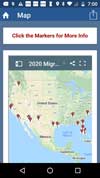 |
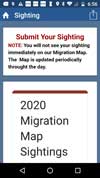 |
Available Here:
The Spring migration for the Ruby-throated hummingbird usually starts in February and ends in late May in their northern most habitat of Canada.
It is believed that hummingbirds will return year after year to the same feeders where they wore born.
Some scientists believe that they will also stop at the same feeders along their route on the same day every year during their migration journey.
Males will usually migrate first followed by the females about 10 to 14 days later. They will double their body mass in weight to “fuel-up” for the long journey.
The Fall migration south back to Mexico and Central America starts when the abundance of insects (their main food source) starts to dwindle with cold temps.
This usually starts in late August into September with the males leaving first followed by the females a week or two later.
However, not all hummingbirds migrate each year. Some will spend the Winter along the western coast of North America.
How does climate change affect the Hummingbird Migration?
Some studies/opinions hint that it could be a problem if hummingbirds arrive in a certain location expecting nectar but the plants are done flowering when they arrive.
If temps are generally getting warmer, flowers maybe blooming earlier resulting in flowers that are past bloom when hummingbirds arrive in the area
Hummingbirds need the nectar from blooming flowers to fuel their long journey. They have the ability to alter their migration routes according to the flowers that are in bloom.
Weather conditions will vary from year to year which affect when flowers will bloom in a particular area. Some years flowers will be in bloom when hummingbirds are passing through and another year they might not be blooming.
However, 300 miles or so east or west of their usual migration route there may be flowers ready to fuel their needs.
Studies have shown that hummingbirds have the sense to alter their routes according to the resources available.
So this gives us hope that these very adaptable little creatures will have the capability to adapt and survive changing conditions.
See our state by state hummingbird migration table listing the average arrival dates.
Submit your hummingbird sightings each Spring and Fall to update the latest travel patterns of hummingbirds to prepare for their arrival.
When will the hummingbirds arrive?
An easy way to estimate the Spring migration arrival dates in your area.
Below is a table of the estimated Spring migration arrivals by state. We compiled this data taken from our visitors sightings from previous years.
If it wasn't for you, our visitors, we wouldn't be able to relay all this important information to our fellow "Hummingbird Lovers"!
We, and I'm sure you, appreciate everyone's participation in posting sightings every Spring during the hummingbird's flight to their Summer homes.
Migration Information
Wondering how these little creatures accomplish this amazing feat year after year!
Below, we will address your wonder!
You will learn how this cross continental trip, truly an astonishing marvel of nature, is accomplished.
We recommend hanging your feeders 2 weeks before the estimated time of arrival just in case they show up earlier.
If you have seen hummingbirds in your state earlier than these dates please let us know by contacting us.
Estimated Spring Arrival Dates by State
|
LOCATION |
DATE |
|
AL |
March - week 2 |
Migration and Breeding Range map of the Ruby-throated Hummingbird.
Map provided by Cornell Lab of Ornithology
This is also the time when nature lovers begin to put their feeders out.
When to hang hummingbird feeders will vary according to the state you live in and the species you will see.
For example, the Costa's hummingbird of Southern California and other southwestern states begin to arrive in late February.
On the other hand, the Ruby-throated hummingbird, the most predominate of the eastern states may not arrive in the northern states and Canada until May.
It is true that most hummingbirds fly north in the spring and south in the winter to complete the hummingbird migration.
There are exceptions such as the Anna’s hummingbird. This hummingbird species may not leave the United States at all but migrate simply to lower elevations in the spring and higher elevations in the summer. It is a matter of food supply and climate.
Another example of a deviation to the typical hummingbird migration Spring to Autumn schedule is the desert breeding Costa's hummingbird of Arizona that leave for a few short months but return in December to nest.
Migration and Breeding Range maps of the Rufous, Anna's, Allen's, Callliope, Broad-tailed and Black-chinned hummingbirds that inhabit the western United States and Canada.
Maps provided by Cornell Lab of Ornithology
You can keep track of their journey by using our interactive map and our list of sightings. It can be fun to report to others your first sightings and keep a record for yourself from year to year.
Enjoying one last Summer Party of 2012 on our back porch before her trip south for the Winter!
It is a good idea to put up your feeders a few weeks ahead of the expected arrival.
If you happen to be on a hummingbird migration route, a hungry traveler might enjoy the meal and possibly even stay. Your regular hummingbirds will expect to return to their normal routine once they arrive.
Are your feeders in good working order? Some may have cracked or broken from the elements over the course of last summer. Begin early and check for problems.
Perhaps, you might like to put up more feeders and have more hummingbirds this year.
We hope you will take a look at our store for a selection of all types of feeders. We carry basic feeders, tray feeders, window feeders, decorative feeders, feeder parts and accessories.
You might even enjoy providing the birds with some hummingbird nesting material.
When do hummingbirds migrate?
Just as hummingbird migration routes are in flux, so is the timing. Of course there may be slight variations in the timing of migration from one year to the next.
This change is dependent on food sources and weather. Bigger changes are being documented by scientists. It has been studied that the Ruby-throated hummingbirds are arriving days to weeks early in recent years.
They are also taking more days to complete a migration journey. It is believed that the abundance of family gardens and hummingbird feeders along the way allow for this change.
Male hummingbirds always arrive about two weeks before
the females.
Hummingbird Migration Map and
Sightings Report for 2023
You have come to right place to report a hummingbird sighting!
We have been tracking the Hummingbird Migration each year since 2009.
Our visitors report a hummingbird sighting and our migration map is updated many times each day to bring you the most current migration map on the web!
We receive well over 8000 hummingbird Spring and Fall sighting reports each year, adding up to over 194,000,000 sightings in the history of our hummingbird migration map and viewed more than 50,500,000 times since we at "The Hummingbird Guide" have been tracking the hummingbird migration each year.
We have also been tracking the Fall Hummingbird Migration since 2015, one of the very few hummingbird sites who track the migration during this time of year.
Some ask, "Why track the Fall Migration?"
Tracking the Fall migration gives warning to those who see a large influx of hummingbirds to their feeders on their way to the Winter habitat in Mexico and Central America.
This warning helps our visitors to be ready with extra feeders and nectar for the migrating hummingbirds who need the nutrition and fuel for their long journey.
In 2020 we added a map with our visitor sightings to track the Winter Hummingbirds or those that "overwinter" (hummers that stay throughout the winter).
To learn more or report your Winter Hummingbird Sighting for 2025 click here.
Where do they travel?
Hummingbird migration routes vary from species to species.
The most famous migration is the Ruby-throated because this remarkable bird travels from Central America and Mexico, crosses the Gulf of Mexico none-stop and continues as far north as eastern Canada.
It should be noted that this route
would be dangerous in the Fall because of a significant chance of missing the Yucatan Peninsula.
For this reason southbound Ruby-throated hummingbirds follow the Gulf Coast
through Louisiana and Texas.
Migration routes are not fixed but continue to evolve.
The Rufous hummingbird is known to have the longest migration route. Typically a Rufous flies north along the Pacific Coast from Mexico through California to their breeding grounds as far north as northern Canada and Alaska.
They return south through the Rocky Mountains.
Nonetheless, more recently there have been many sighting of Rufous hummingbirds expanding their migration route by crossing southern Canada from west to east and continuing south along the Atlantic coastline sometimes wintering in the southern Unites States.
As we have said, most hummingbirds migrate but an increasing number of western hummingbirds are being spotted and banded in winter.
It is no longer unusual for someone to see an Allen’s or a Rufous hummingbird overwintering in Maryland, Alabama and even Pennsylvania.
Could our changing climate be responsible or something else?
People often worry about the safety of these vagrant hummingbirds during a winter cold snap and should call the local Audubon Society for information.
How do hummingbirds
complete this amazing feat?
A common myth about hummingbird migration is that they migrate on the backs of geese!
Like other myths, this explanation was probably invented to solve a mystery.
How could such tiny birds migrate those tremendous distances?
Possibly, people who truly loved hummingbirds were looking for a softer and
easier journey for their precious little friends.
The truth is that hummingbirds do make the arduous migration journey on their own.
Wouldn’t you be even more impressed to hear that they actually travel alone and not in flocks? I was!
Yet, here is the genius of nature.
When flying alone these tiny birds become almost invisible to predators. Unlike geese, hummingbirds fly low, not much higher than rooftops and the treetops, in search of food along the way.
How fast does a hummingbird fly?
The distance a hummingbird flies in one day is determined by the species, terrain, wind velocity, and food sources along the way.
The average hummingbird flies 25 miles per hour.
A Ruby-throated hummingbird flies across the Gulf of Mexico none-stop using the wind to their advantage, increasing their speed and shortening the time it takes to cross over the water.
Hummingbird banders have shown that this journey across the Gulf generally takes about 20 hours.
So just think about it. This tiny bird flies non-stop for 20 hours across the water. How can they accomplish this incredible feat when we consider their food requirements?
After all, can’t a hummingbird starve without
food within several hours? The answer lies in anatomy.
A hummingbird bulks up for weeks before migration.
Here is another reason to keep those feeders up for a couple weeks beyond the very last hummingbird visit .
Hummingbirds can store up to half their total body weight as fat for the purpose of migration.
I had wondered if they fly throughout the night. The answer is yes, hummingbirds fly throughout the night when making the trip across the Gulf.
Wow!! That is hummingbird migration, one of nature’s truest miracles.
See our past years maps and sightings to help estimate the arrival of the hummingbirds in your area.
Spring Migration Maps
Fall Migration Maps
For me, it's a glorious day and Spring starts
............................. when the Hummers arrive!
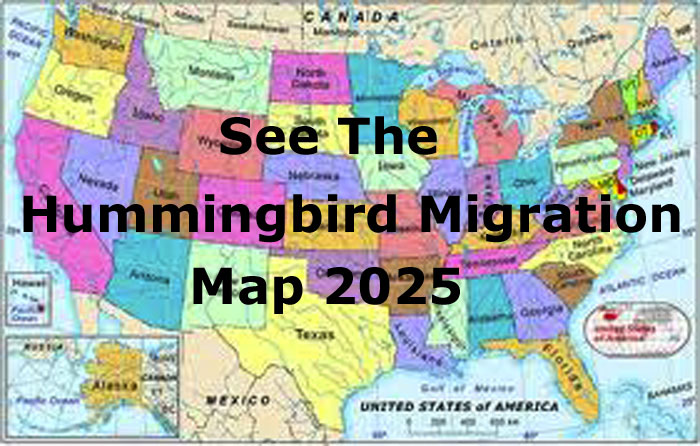
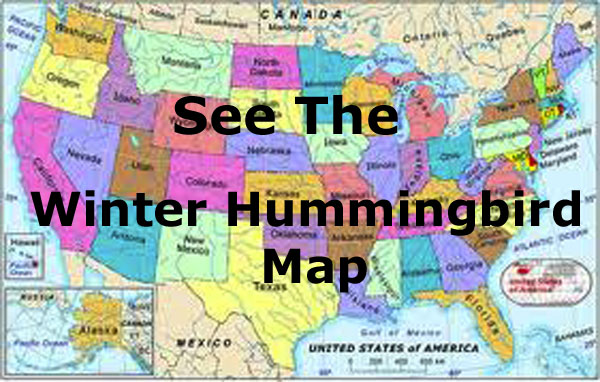

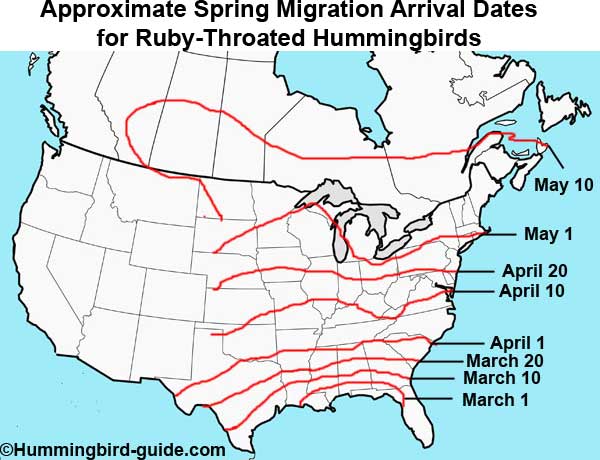
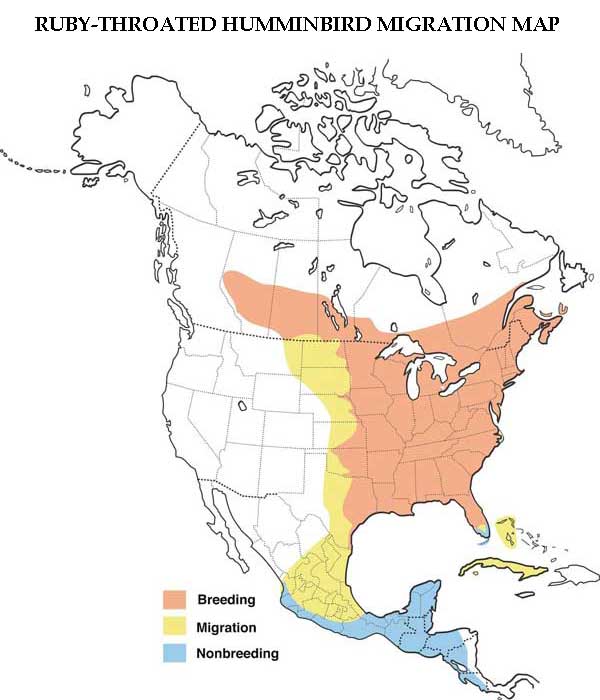
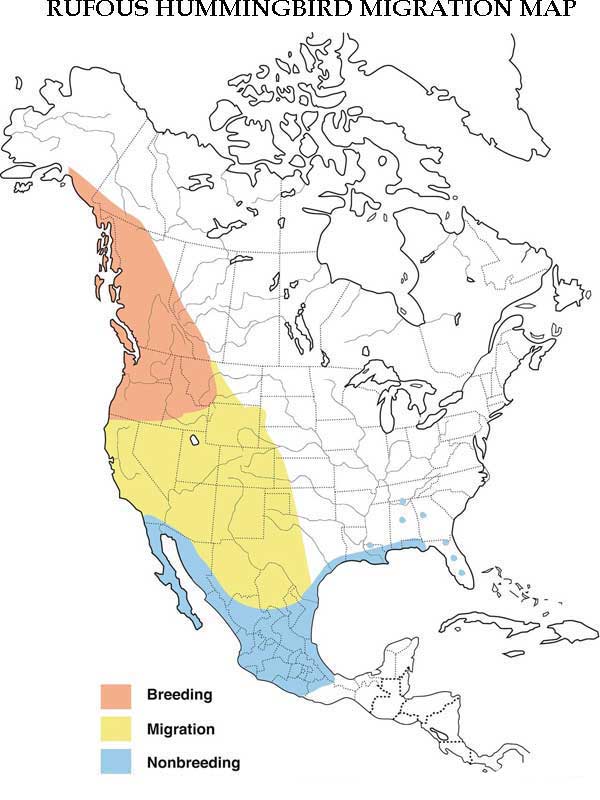
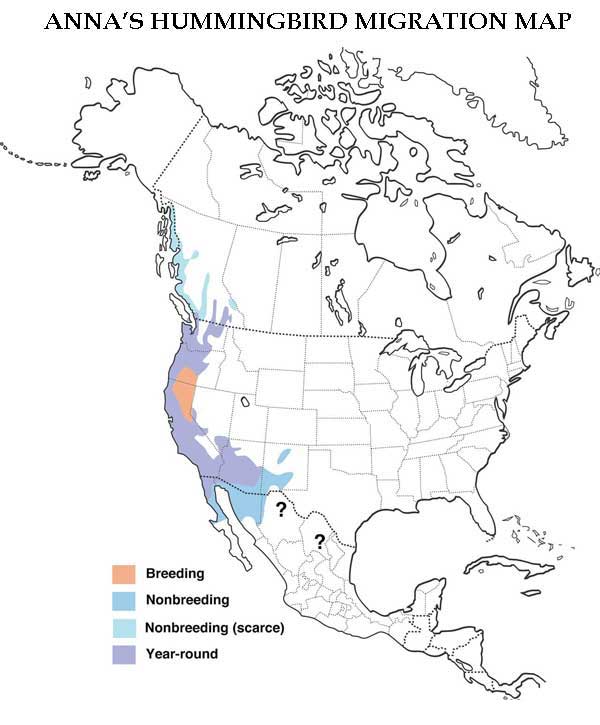
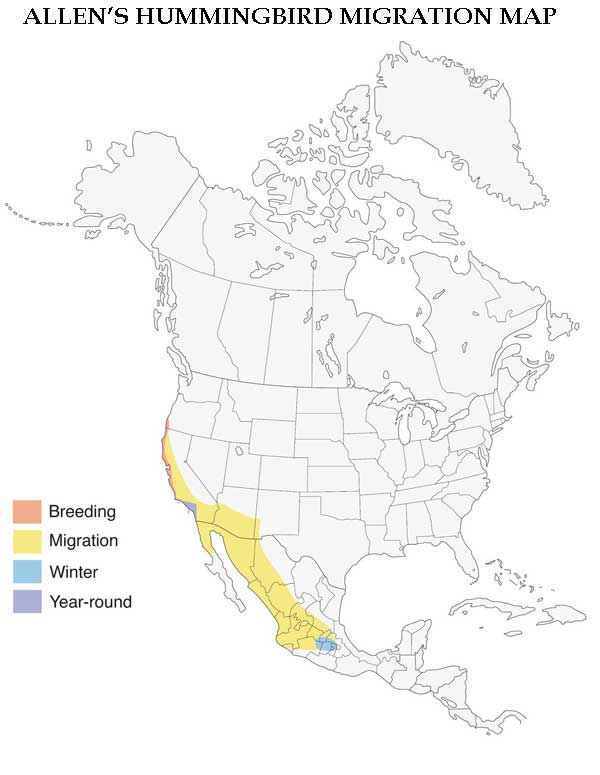
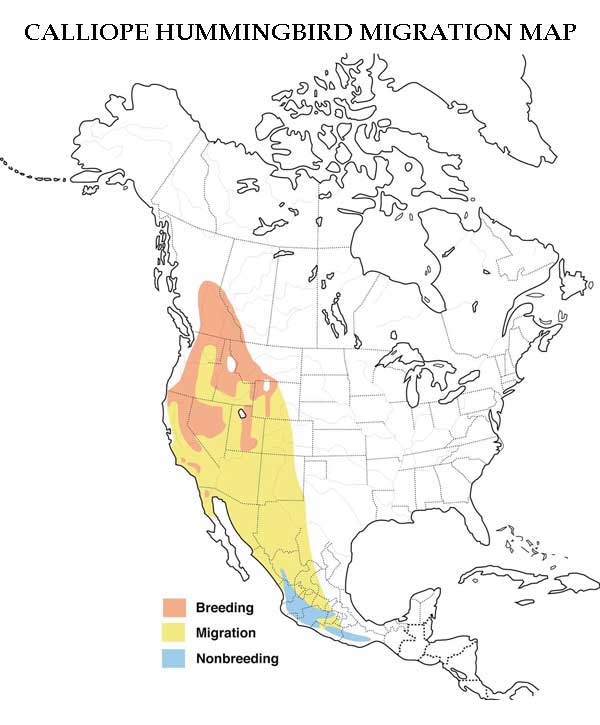
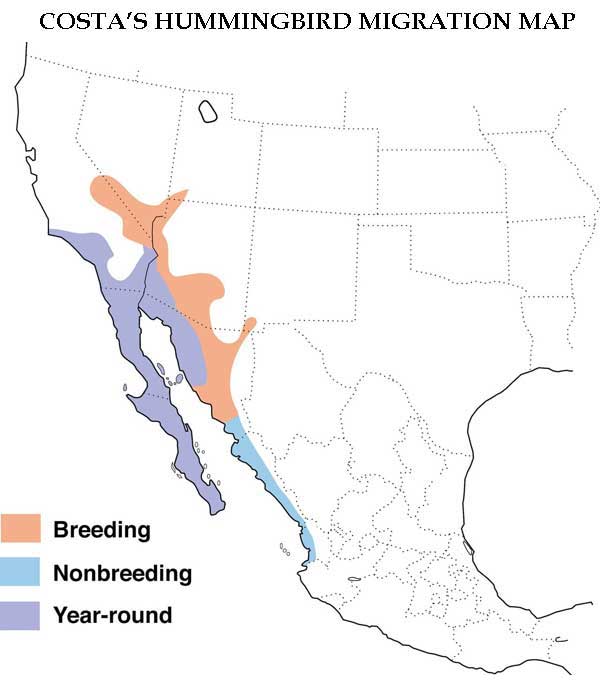
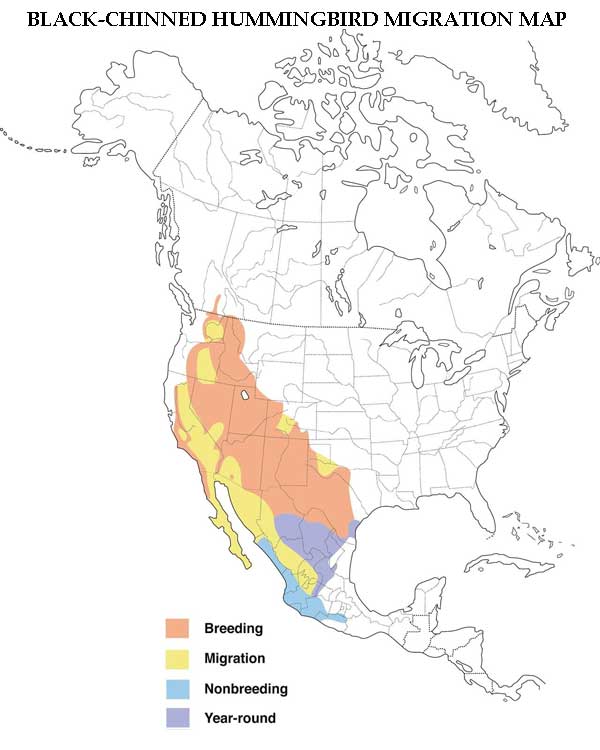
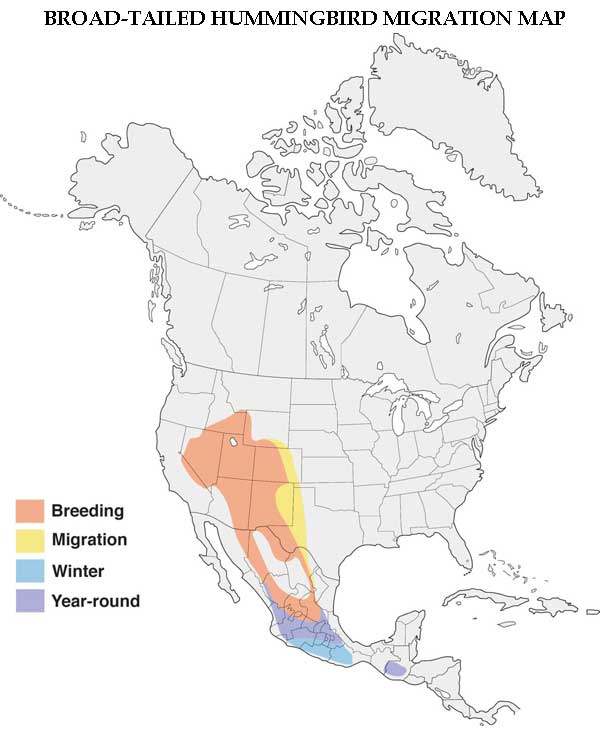
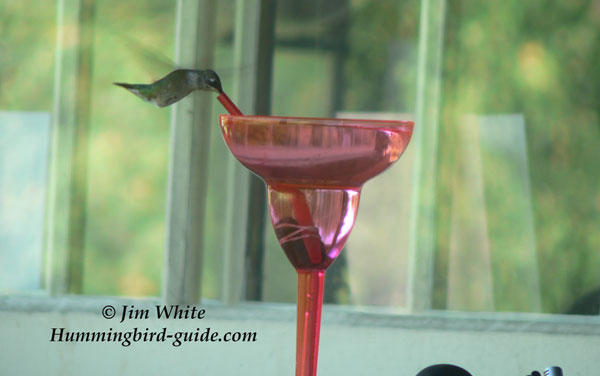
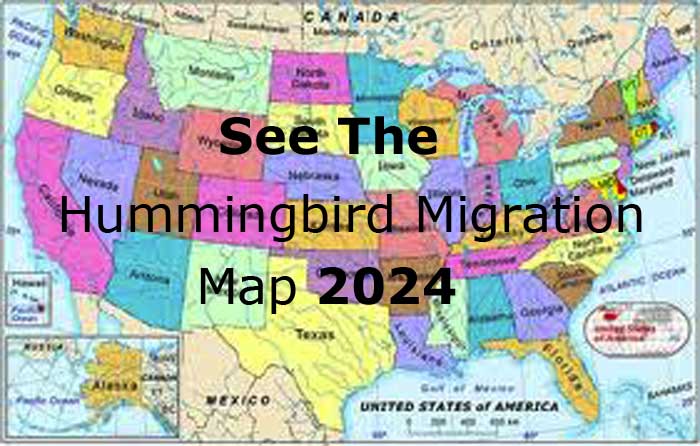
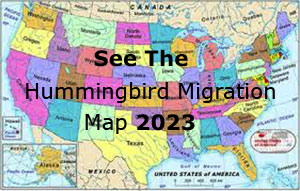
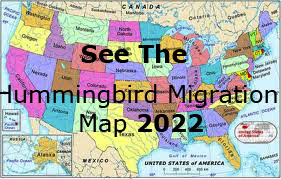
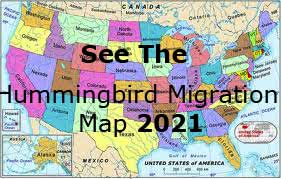
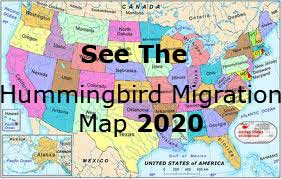
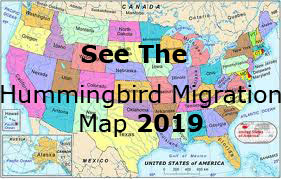
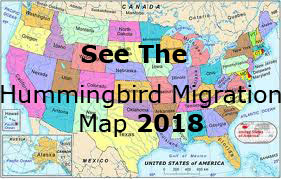
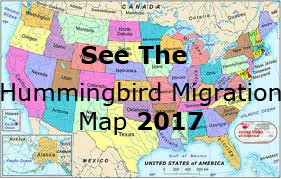
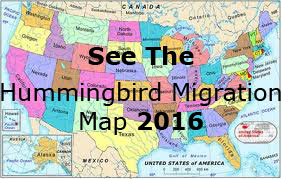
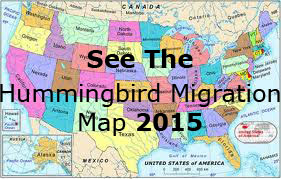
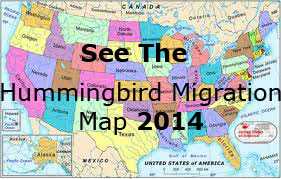
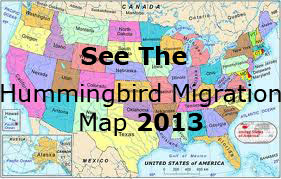
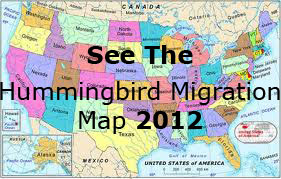
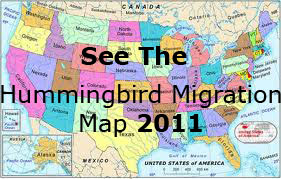
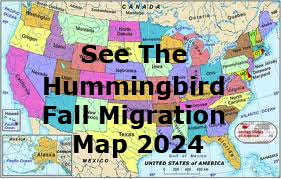
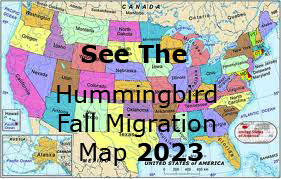
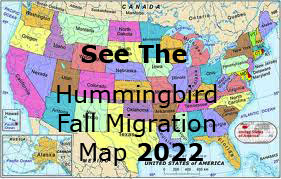
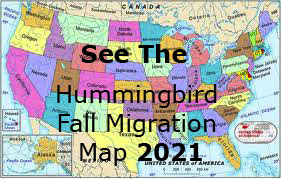
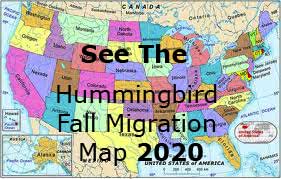
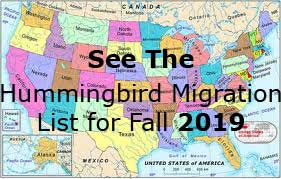
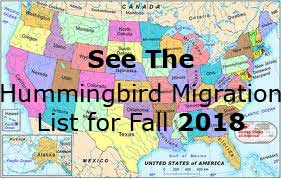
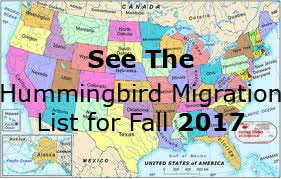
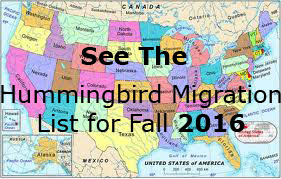
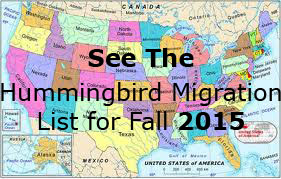
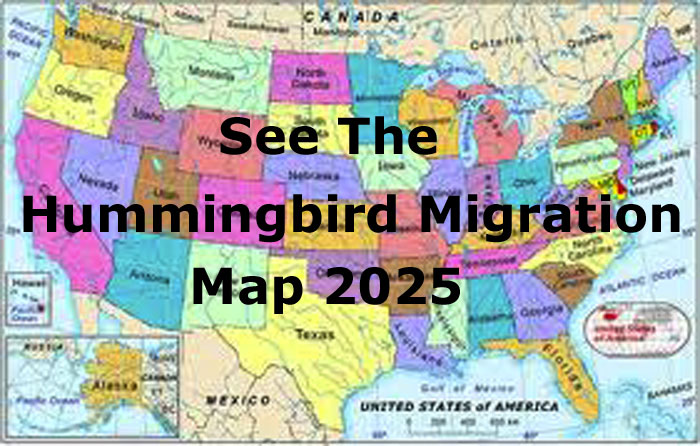

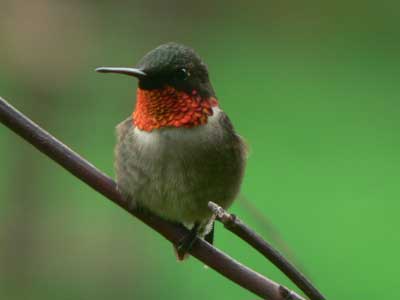
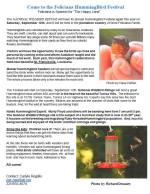
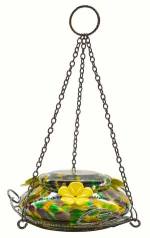
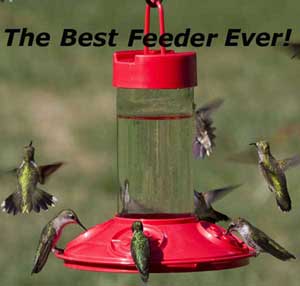
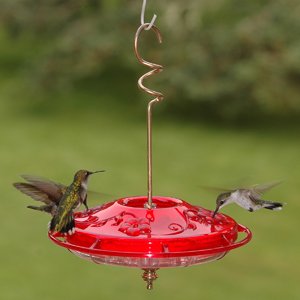
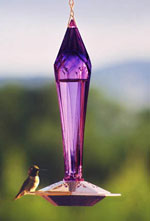

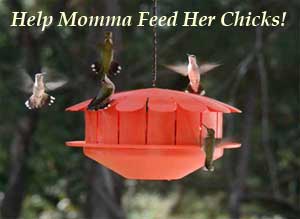



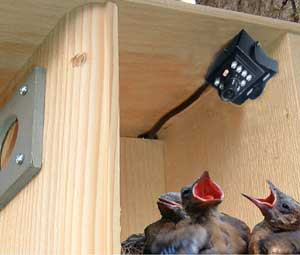
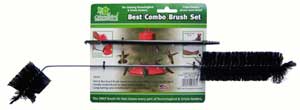
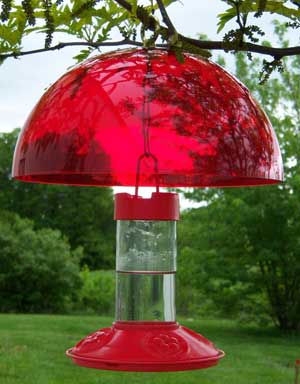
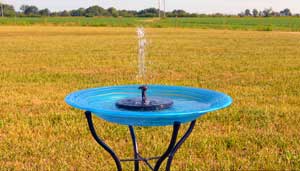



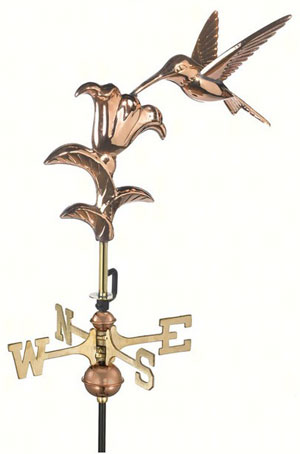





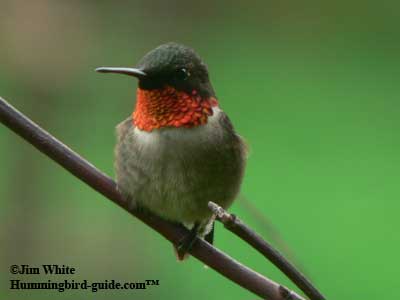
New! Comments
Have your say about what you just read! Leave me a comment in the box below.